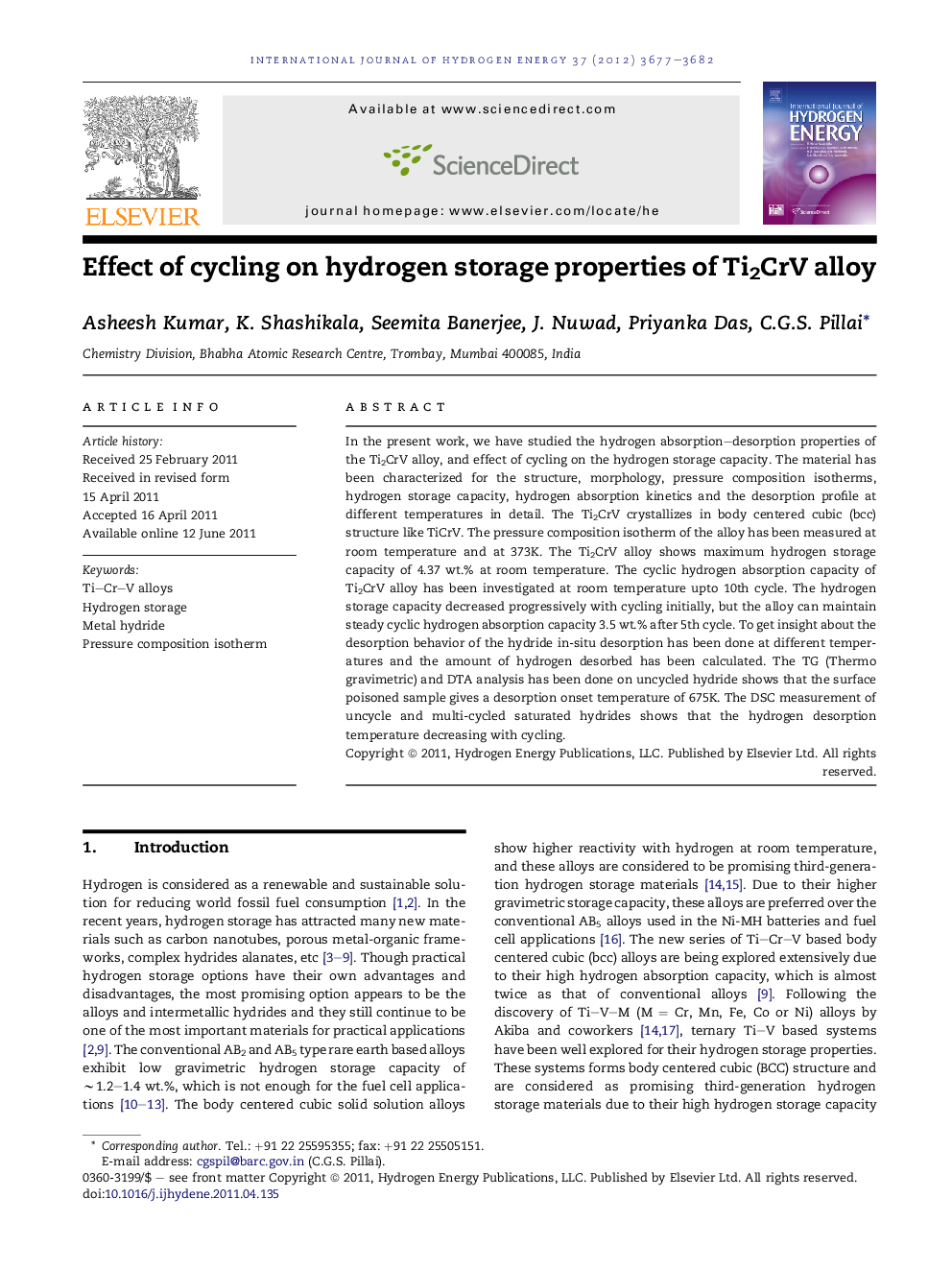| Article ID | Journal | Published Year | Pages | File Type |
|---|---|---|---|---|
| 1282380 | International Journal of Hydrogen Energy | 2012 | 6 Pages |
In the present work, we have studied the hydrogen absorption–desorption properties of the Ti2CrV alloy, and effect of cycling on the hydrogen storage capacity. The material has been characterized for the structure, morphology, pressure composition isotherms, hydrogen storage capacity, hydrogen absorption kinetics and the desorption profile at different temperatures in detail. The Ti2CrV crystallizes in body centered cubic (bcc) structure like TiCrV. The pressure composition isotherm of the alloy has been measured at room temperature and at 373K. The Ti2CrV alloy shows maximum hydrogen storage capacity of 4.37 wt.% at room temperature. The cyclic hydrogen absorption capacity of Ti2CrV alloy has been investigated at room temperature upto 10th cycle. The hydrogen storage capacity decreased progressively with cycling initially, but the alloy can maintain steady cyclic hydrogen absorption capacity 3.5 wt.% after 5th cycle. To get insight about the desorption behavior of the hydride in-situ desorption has been done at different temperatures and the amount of hydrogen desorbed has been calculated. The TG (Thermo gravimetric) and DTA analysis has been done on uncycled hydride shows that the surface poisoned sample gives a desorption onset temperature of 675K. The DSC measurement of uncycle and multi-cycled saturated hydrides shows that the hydrogen desorption temperature decreasing with cycling.
► In this study we investigate the hydrogen storage properties of Ti2CrV alloy. ► The alloy shows one of the highest hydrogen absorption capacities among Ti–Cr–V series with hydrogen storage capacity of 4.37 wt.%. ► The alloy maintains 3.5 wt.% of hydrogen storage capacity after several cycles. ► The TG-DTA and DSC analysis shows that hydrogen desorption temperature decreases with cycling of the alloy. ► In-situ hydrogen desorption shows that at room temperature and 373K the alloy desorbs 0.95 and 2.2 wt% of hydrogen.
